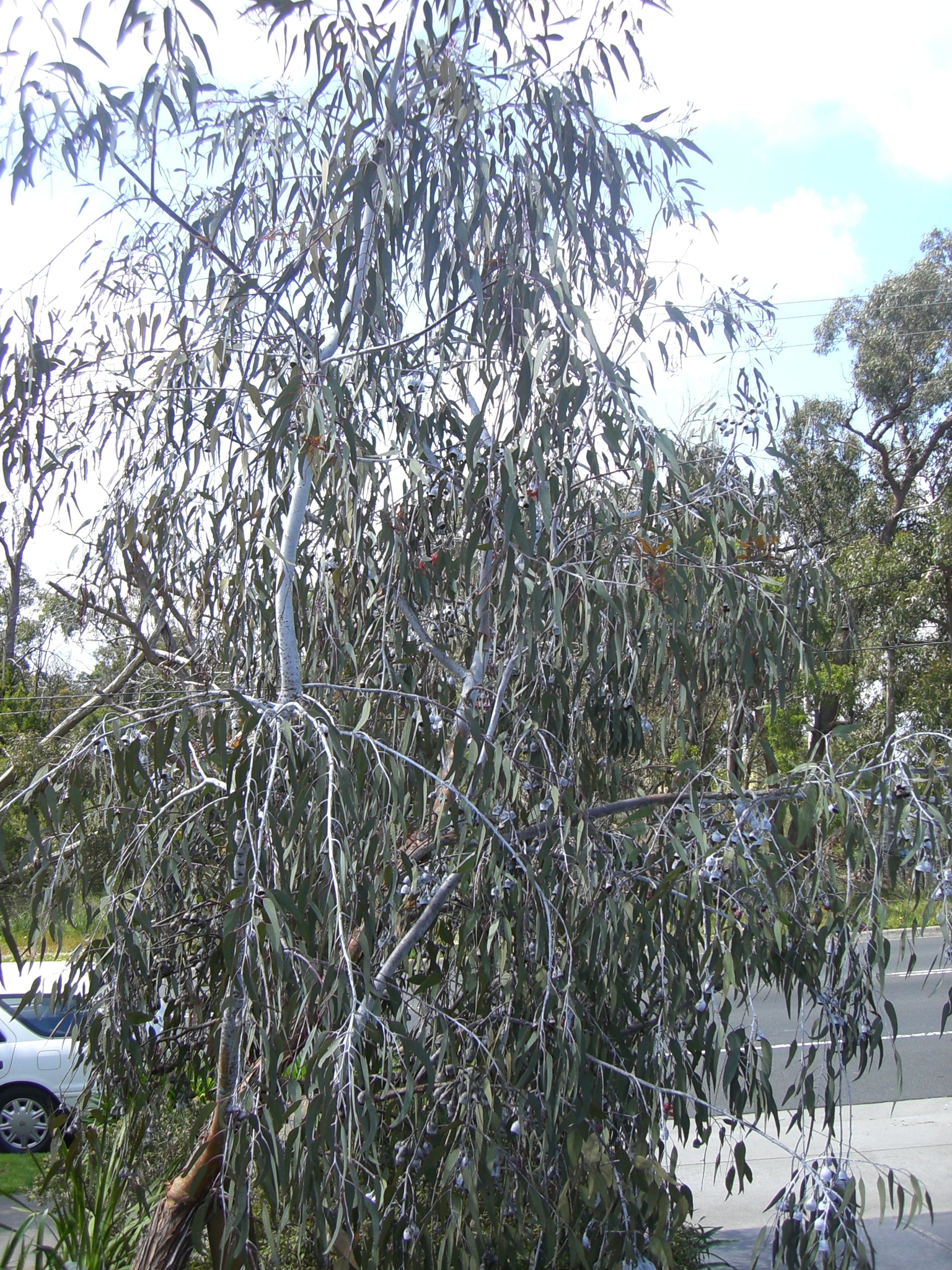
Mallee to 10 m tall with a somewhat straggling habit. Branchlets waxy-white and pendulous. Bark smooth and reddish, peeling in long flakes on older trees. Juvenile leaves alternate, orbicular or cordate, glossy, stalked. Adult leaves lanceolate, often sickle-shaped, grey-green, dull. Leaf stalk waxy-white. Flowers in 3s, pendulous, pink to near red with golden anthers; July-Oct. Buds club-shaped, white-waxy; lid conical. Fruits white-waxy, finely lined, valves 5-6.
Grows naturally among granitic rocks in inland SW WA. A popular ornamental grown for its drooping habit, white branches, colourful flowers and attractive belllike fruits. The common name may have been incorrectly applied to this eucalypt as Aborigines use this name for E. woodwardii.
subsp. caesia, the subspecies generally known as Gungurru. Leaf blade 7-12 cm long, 1.2-2.5 cm wide. Leaf stalk 1-4 cm long. Flower cluster stalk 2-3 cm long. Fruits urn-shaped, 2-3 cm long, 18-25 mm wide.
subsp. magna Brooker and Hopper, Silver Princess. This subspecies is generally known by the cultivar name 'Silver Princess' which is perhaps best used as a common name. Leaf blade 15-24 cm long, 2.5-5 cm wide. Leaf stalk 2-6 cm long. Flower cluster stalk 3-4.5 cm long. Fruits bell-shaped, 2.5-3.7 cm long, 2.5-4 cm wide.
WA.
Source: (2002). Eucalyptus. In: . Horticultural Flora of South-eastern Australia. Volume 3. Flowering plants. Dicotyledons. Part 2. The identification of garden and cultivated plants. University of New South Wales Press.
